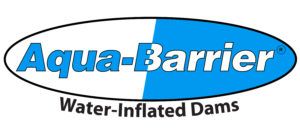Despite US dominance as a developed powerhouse, the country experiences some of the worst natural disasters in the world. Hurricanes, floods, wildfires, and tornadoes occur regularly all over the nation. Advanced weather forecasting and satellite tracking offer warning, and evacuation orders help save lives. Prevention is crucial to avoid greater tragedy.
Common Traits of the Worst Floods
The worst floods in US history occurred over more than a century in different parts of the country. Still, there are commonalities in the destruction. Few of the floods were expected, and most regions lacked an adequate warning system for residents. In several cases, problems with dam stability was noted and ignored. Here are the top 10 worst flood events in US history:
1) Johnstown
On May 31, 1889, the South Fork Dam in Johnstown, Pennsylvania collapsed, leading to devastating flooding. The region had previously experienced heavy rains, which clogged the dam spillways. There was more than $453 million in property damage, and an estimated 2209 people perished.
2) St. Francis Dam Failure
The St. Francis Dam was opened in 1926 after two years of construction. Not long after construction was complete, cracks began to form on the surface of the dam. It collapsed on March 12th, 1928, killing 431.
3) Ohio River Flood
The 1937 flood of the Ohio River, left an estimated 350 people dead and nearly 1 Million homeless. Rains and flooding persisted for a solid month, from January 5-February 5.
4) Great Dayton Flood
The greatest natural disaster in Ohio’s history was the Great Dayton Flood, which killed 360 people,displaced 65,000 and destroyed tens of thousands of homes and businesses.
5) Great Mississippi Flood
The Great Flood of 1927, flooded the lower Mississippi River valley in April 1927. It was one of the worst natural disasters in the history of the United States. More than 23,000 square miles of land was submerged, hundreds of thousands of people were displaced, and around 250 people died.The flooding impacted areas in Arkansas, Illinois, Kentucky, Louisiana, Mississippi, Missouri, Tennessee, Texas, Oklahoma and Kansas.
6) Black Hills
On June 9, 1972, heavy thunderstorms caused flash flooding throughout Rapid City and the eastern foothills of the Black Hills, South Dakota. The flood destroyed homes, vehicles, businesses, bridges, and claimed the lives of 238 people.
7) Los Angeles
The Los Angeles disaster killed 144 people and left the area with repairs lasting for years. This flood prompted the country to the plans to protect the region from the unpredictable nature of the Los Angeles River.
8) Columbus, Ohio
This flood in 1913 occurred between March 23 and March 26, after major rivers in the central and eastern United States flooded, killing 90. This flood prompted federal and local government officials to change the management of waterways and develop flood prevention measures.
9) Laurel Run Dam Failure
As early as 1943, the spillway at the Laurel Run Dam was identified as inadequate to handle a large storm. It was advised that it be upgraded. Another dam assessment in 1959 noted that the spillway wasn’t large enough. Despite these findings, no action was taken to increase the spillway capacity at the dam. In 1970, the dam was classified as a hazard risk, yet again, no action was taken. On July 20, 1977 during a torrential storm, the dam failed, killing 40.
10) Austin Dam Failure
On September 30, 1911, the Austin dam failed and destroyed much of the town of Austin. The property damage was around $10 million. It resulted in the deaths of 78 people.
Lessons Learned From the Past
The value of these disasters are the lessons learned from them. They prompted major reform in infrastructure, warning systems and accountability. Federal funding increased for public works, and disaster relief funds were established. With increased warning systems, people are better able to protect their property and themselves. With tools such as the Water Inflated Property Protector, there are more resources to combat flood damage.
For more information about how to protect your home or business in the event of a flood, Contact Us.


